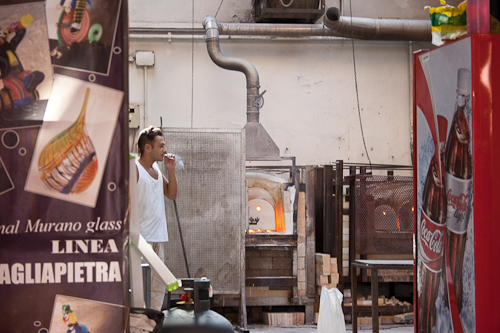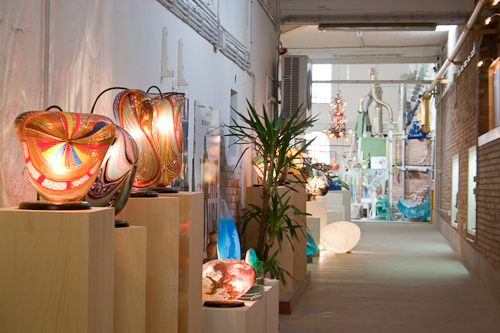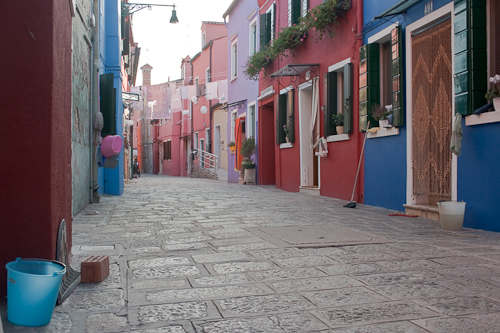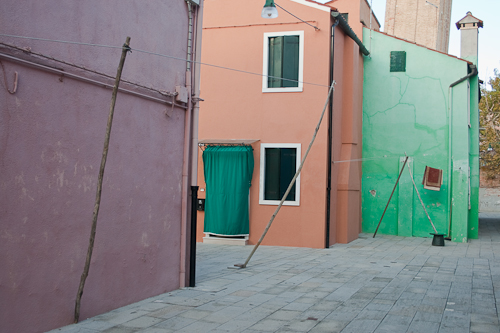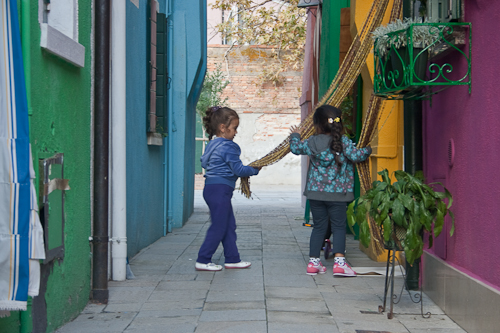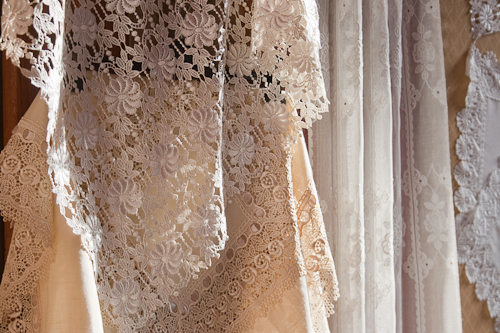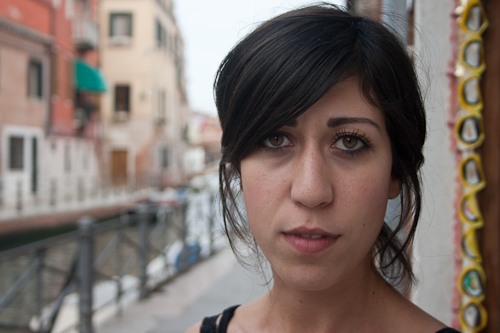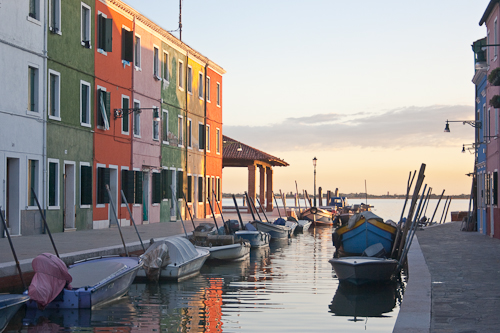The glass master forms the shape by swinging an amorphous ball of glowing matter through the air, transforming it into a swirl of colour ultimately bound for the annealing kiln. Working demonstrations provide visitors with a glimpse of new manufacturing practices as well as ancient techniques used throughout Murano’s long glass-making history.

Visitors are quick to scoop up jewellery and tableware, and the occasional chandelier or mirror. But don’t be fooled – if it doesn’t say Vetro Artistico ®Murano, it’s not legit. Shopkeepers here are quick to point out that theirs are local products, not from China. (Imitation is rampant, particularly in Venice.) They display genuine goods bearing the original trademark, following stringent controls set forth by the Consorzio Promovetro whose intent is to “conserve and safeguard the island’s thousand-year-old artistic glasswork tradition, while promoting its marketing throughout the world.”
Beautiful examples of traditional, miniature, and contemporary glassware come from prestigious companies like Venini who feature the work of numerous Italian and international artists, and from studios and artisan factories of independent designers such as Carlo Moretti and Cesare Toffolo.
Murano is the largest of the islands in the Venetian Lagoon. The town plan is partly based on the unique morphology of Venice itself – it has nine islets joined by a long canal that weaves through. And just a vaporetto ride north is the tiny island of Burano, strung with brightly painted façades. Colour takes on a collective importance here. You’ve got to see it to believe it.

